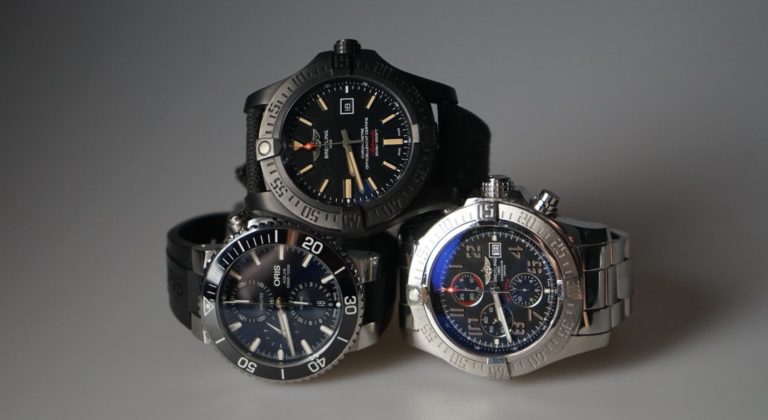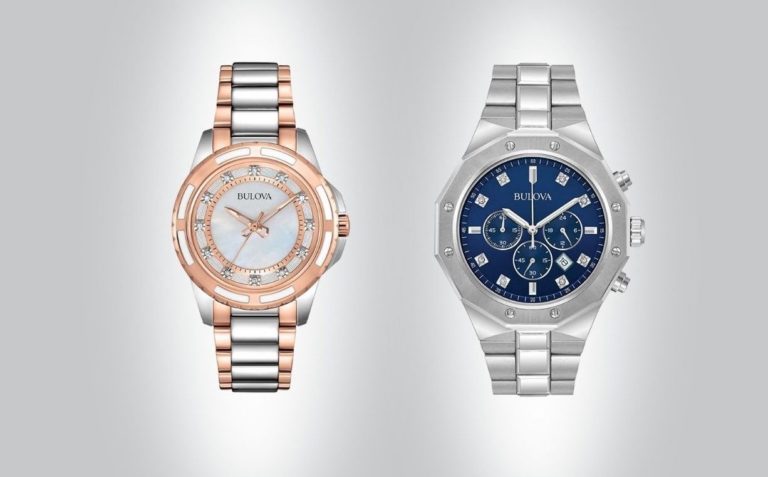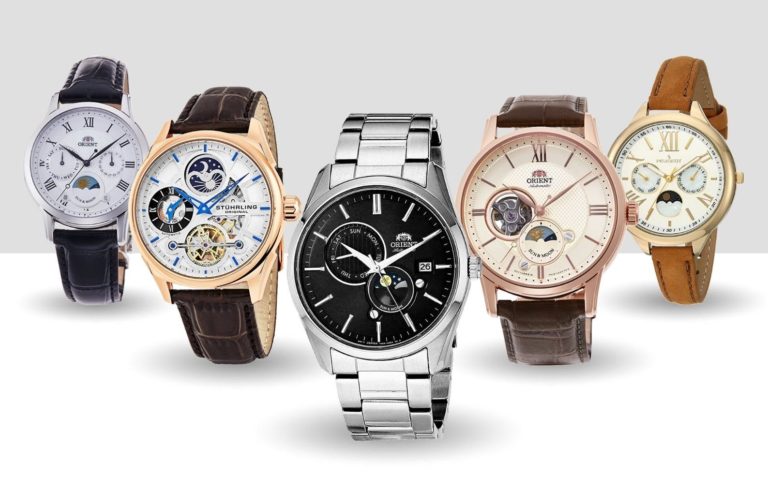Affiliate Disclosure: As an Amazon Associate I earn from qualifying purchases. Details
Watch terms can sometimes be overwhelming. There is literally a textbook load of words that ordinary people have no clue what they mean or what they are for.
One of the terms frequently popping up in various contexts is a watch lug.
In this blog post, we will explain what watch lugs are and why they are essential. We will also discuss the different types of lugs that watches come with and why the various lug measurements are important, and how to measure them.
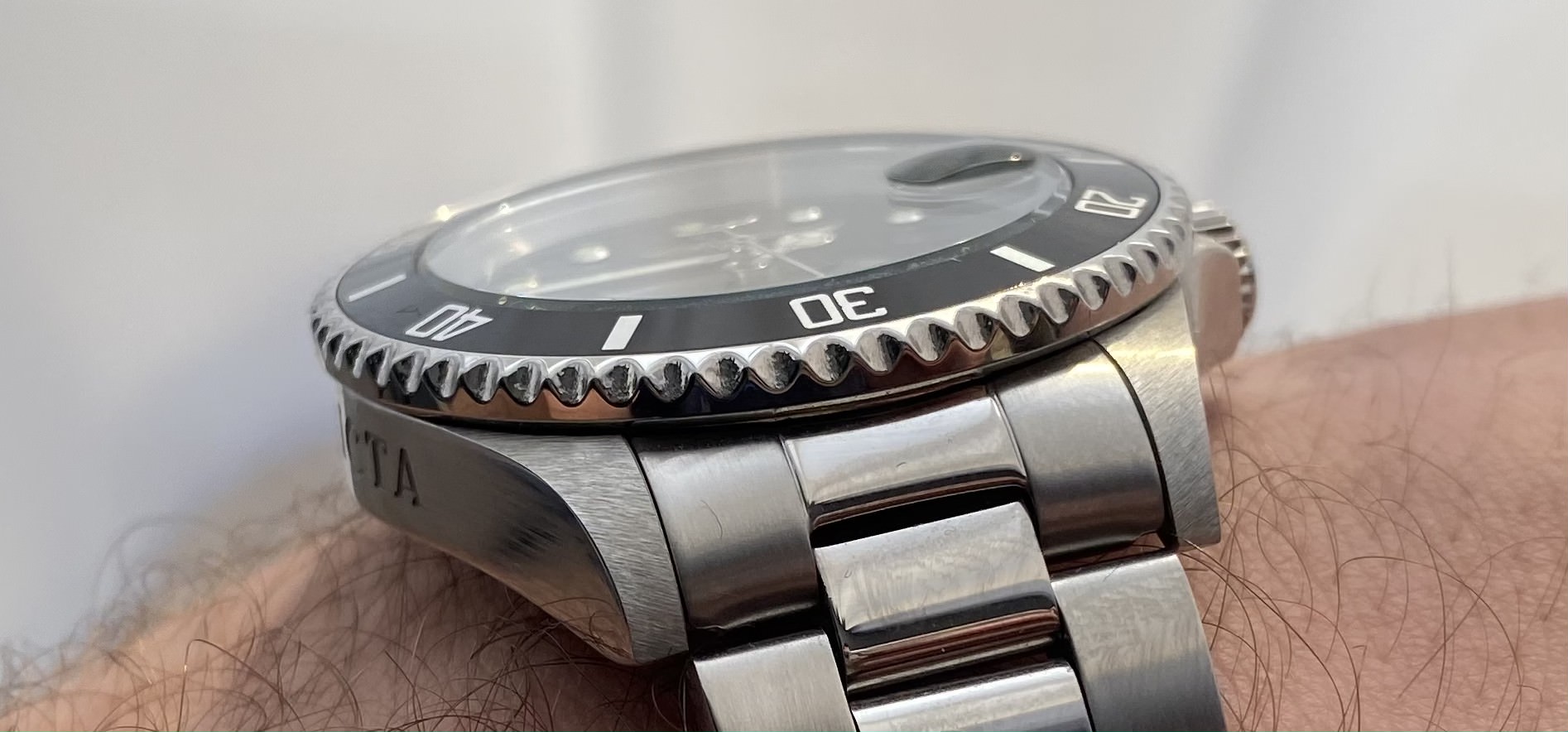
What Is a Watch Lug?
A watch lug, also referred to as a “watch horn,” is the part of the watch on both ends of the case that connects the strap with the watch case.
They are important parts because they secure the timepiece to the wrist via the spring bars of straps and give the watch its distinctive look.
In broad terms, there are two shapes of watch lugs – flat and curved. While the flat (straight) lugs lay flat on the wrist, the curved lugs help the strap hug the wrist better.

However, the shape of watch lugs doesn’t play an as important role as the dimensions do.
For instance, if a watch has long lugs, the perceptible size of the timepiece increases. Conversely, the same logic applies to short watch lugs – they make the watch look and feel smaller than the actual case size might indicate.
Therefore, knowing lug measurements is essential in determining the most suitable watch size for a particular wrist shape and size.
What Is a Lug to Lug Measurement?
A lug to lug measurement is the distance from one lug to another measured from top to bottom. To put it simply, it is the length of the whole watch (par the straps).
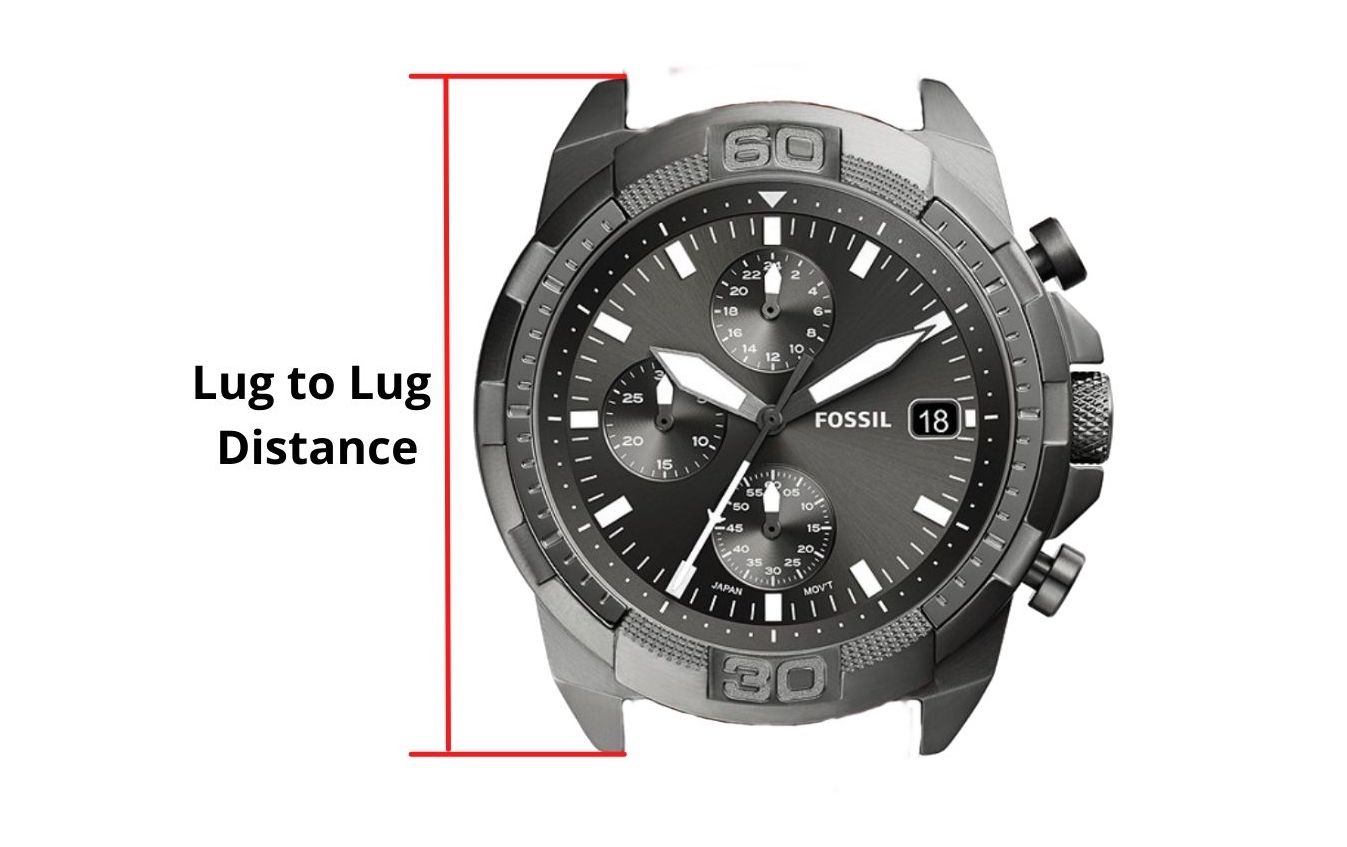
This measurement is crucial because it helps you determine the actual size of the watch on your wrist. As already discussed above, the different length of lugs plays a significant role in how the watch looks on your wrist.
For example, if you have small wrists (5.5in-7in), it is better to choose a smaller watch with less lug to lug distance (e.g., 38-40mm case & 42-45mm lug distance).
On the other hand, if you’re blessed with large wrists that measure above 7.3in, then go for bigger watches with more lug to lug distance (e.g., 42-44mm case & 46-50mm lug distance).
Many watch brands state the lug to lug measurement along with other dimensions of the watch. Once you’ve made sure the most suitable case size and lug distance for your wrist, you will never have to worry about ordering a too small or too big watch.
Measuring the watch’s lug to lug distance is simple – just place the ruler/tape next to the lugs and measure the distance from the top to the bottom in millimeters.
Watch Lug Width
Another context where you come by with the term is the watch lug width. So, what is it?
A watch lug width is an internal distance between the two horns of a lug, measured in millimeters. This measurement is important because it helps determine the strap size that will fit on the watch.
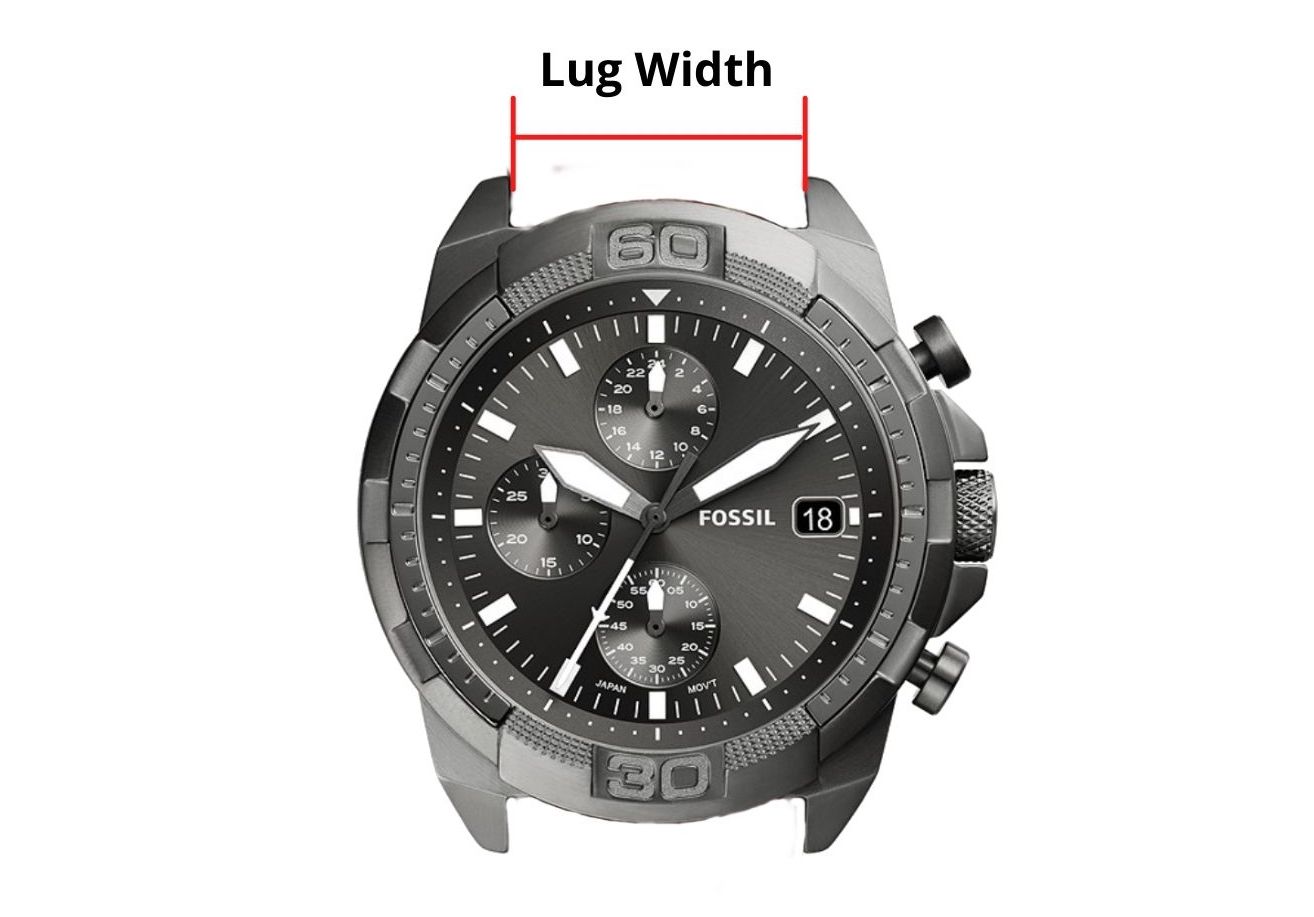
So, you will need the watch lug width when replacing the existing straps with new ones or with other types of straps.
Many straps have the width printed on the inside. However, if it’s not there, you would have to measure the lug width yourself.
Again, it is as easy as it sounds – just place the ruler/tape next to the lugs and measure the internal distance from one lug to another. The result you get is the strap size that fits your watch.
The most widespread lug widths are 18mm, 20mm, and 22mm, but there are also 19mm, 21mm, and 23mm lug widths. So if your measurement gave you a 0.5mm result, double-check the result as the lug widths always come in whole numbers.
Types of Watch Lugs
Now that all the basic information regarding the watch lugs and the measurements is covered, let’s look at the 4 popular types of watch lugs you may encounter.
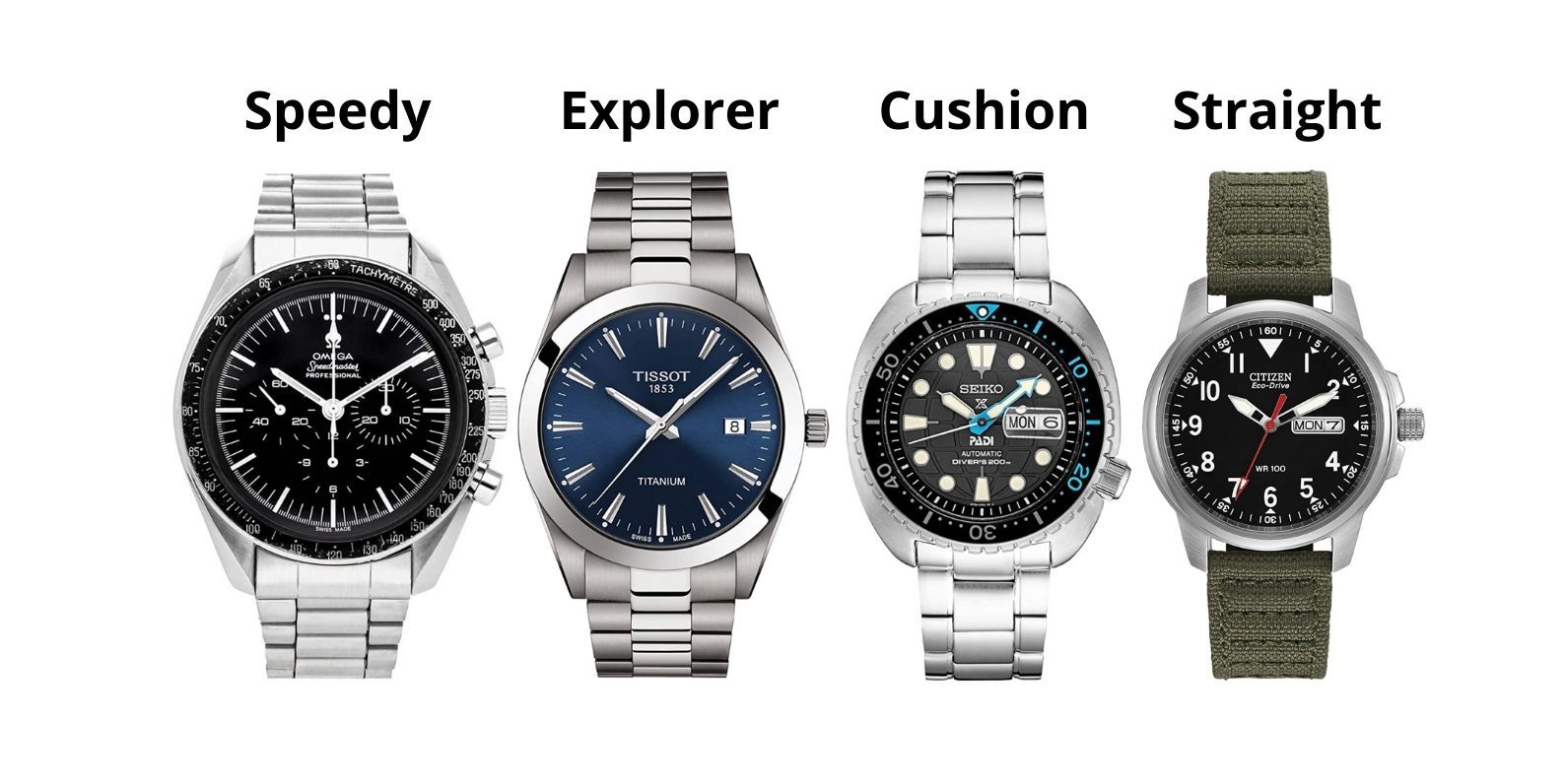
1. Speedy Lugs
Speedy lugs, also known as Bombe lugs, are the most popular types of watch lugs made famous by Omega Speedmaster back in the 1960s (hence, the name Speedy).
The lugs are identifiable for their straight design that slightly curves inward.
2. Explorer Lugs
Explorer watch lugs received their name from another famous timepiece – the Rolex Explorer.
In essence, they are similar to the speedy lugs. However, explorer lugs are more straight and come with a geometric look. In addition, they stretch to the sides of the case and get slimmer towards the top.
3. Cushion Lugs
Cushion lugs used to be quite popular some while ago when they were employed in dive watches. However, these days, they are not that widespread. Still, you can find some timepieces that carry cushion lugs, such as the line of Seiko Turtle watches.
You will recognize cushion lugs for their cushion-like shape.
4. Straight Lugs
These types of lugs are the most straightforward of them all – they are straight and typically relatively thin.
You will find straight lugs mostly from dress watches and minimalist timepieces.
Final Words
As you can see, every watch part owns significance. Even the ones that seem irrelevant at first play a huge role in how the watch looks like.
The most important takeaway regarding the watch lugs is that dimensions matter, whether it is to do with the perceptible size of the watch while wearing it or knowing exactly what straps go with it.
Therefore, pay attention to the shape and size of watch lugs when choosing your next timepiece.
You may also like:
Affiliate Disclosure: As an Amazon Associate I earn from qualifying purchases. Details
- CIGA Design Blue Planet Gilding Watch: The Best Conversation Starter Around? - April 2, 2023
- CIGA Design X-Series Review: The Most Skeleton for the Money? - July 7, 2022
- What Is A Dive Watch? A Complete Guide - May 17, 2022

